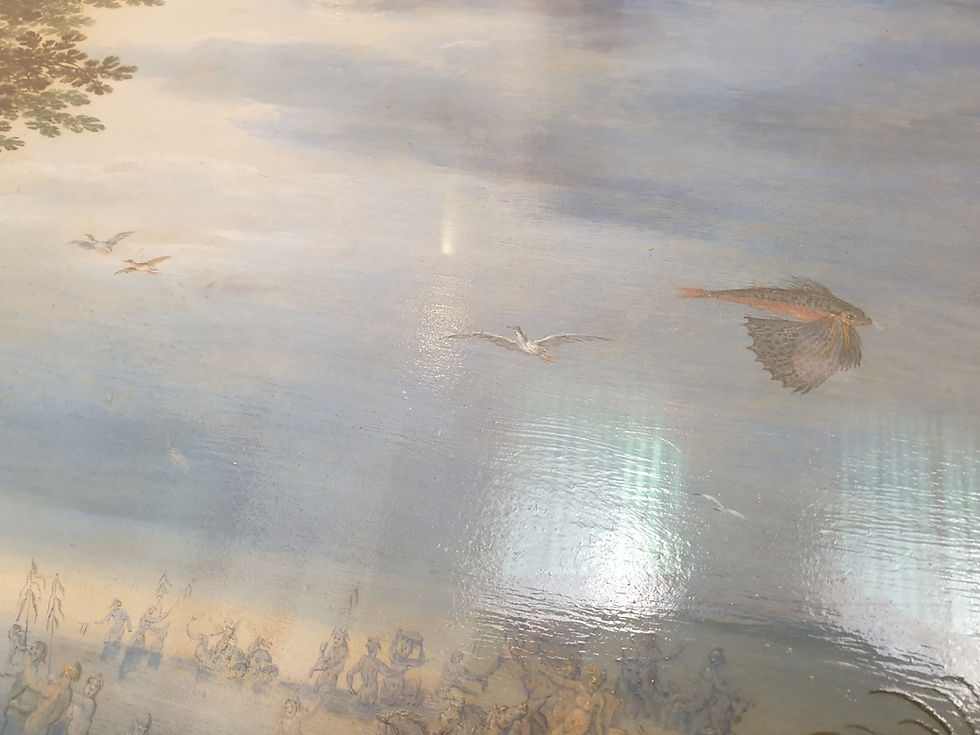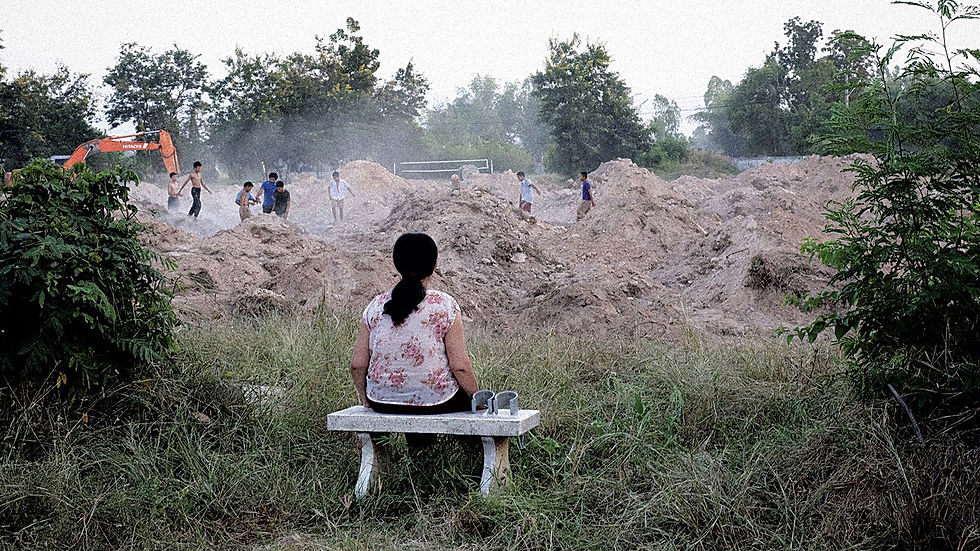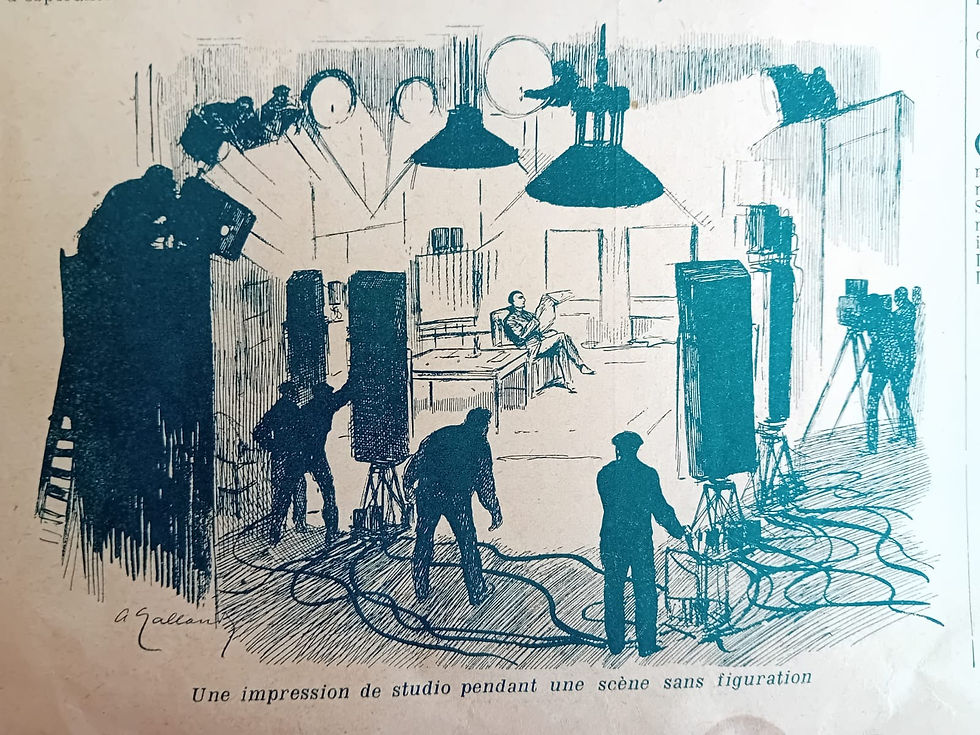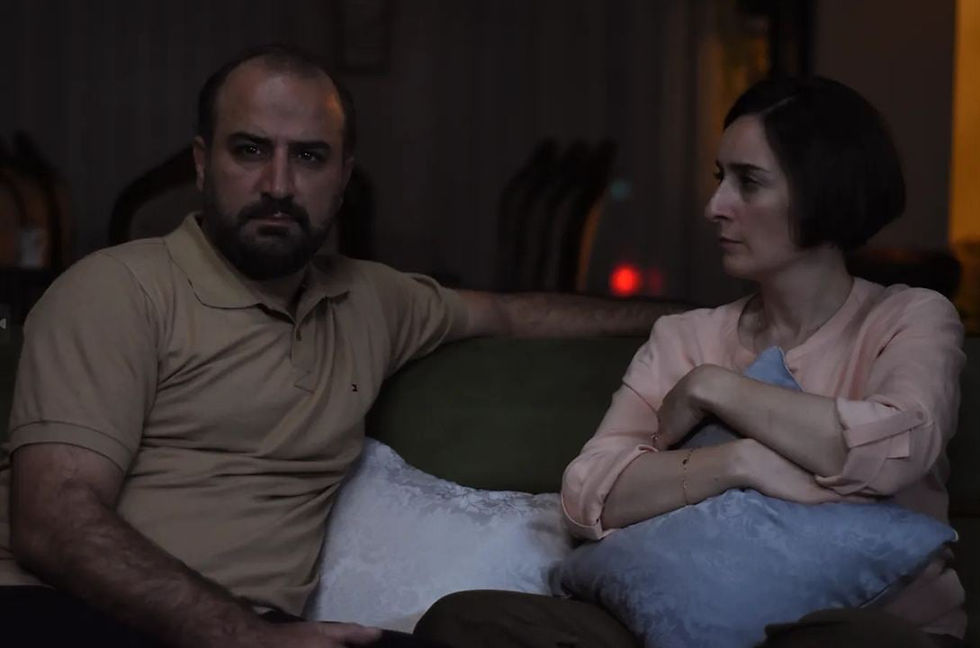Cinema critique essay series“IMAGINARY RETROSPECTIVE”
- Marina Drozdova

- Dec 5, 2024
- 3 min read
Earth snoring

“The world is cruel, and I make films as adaptations of my dreams - I carefully outline dreams and then fish out dramatic issues from there,” Apichatpong Weerasethakul told us long time ago at the Cannes festival.
But as far as I feel, his films are not only the dreams, but also an excellent example of crystal naivism. And it passes into the realm of high art thanks to magical proportions. And so the sleepy babble becomes the music of spheres. Let's speak about Cemetery of Splendour.
We could give a variety of definitions to his films. The most attractive in my opinion: "psycho-geographical essay." The puzzles of a realistic-looking reportages about the life of a Thai village. The local clinic. Soldiers/patients dig the pits for a government project and they are getting sick with narcolepsy - sleeping sickness. A young sister of mercy is a volunteer and – the medium; and she explains that the ancient kings, whose graveyard has been disturbed by the excavations, put the soldiers to sleep. Sacred items become clear thanks to the mysterious melancholy of the visual plasticity. Somnambulistic mysticism.

A brilliant episode: the appearance (for no reason) of two Laotian princesses, buried centuries ago and suddenly appearing from the bas-relief of an ancient temple. Two ladies turn out to be princesses and they simply sit down at the table with the main character.
The director never aims to enchant the audience with the beauties of the region. A village, a bus stop, a clinic, a public park - everything is dormant in the provincial dust, boredom. But it becomes clear that History lingers - before sinking into eternity.
So we could describe the quirks and wonders of the director endlessly.
In the film, of course, the motives of pacifism are important. Yes.
The film has really a healing effect on minds.
SPELEOLOGISTS UNDER THE BIG TOP
Werner Herzog always finds characters whose fantasy conquers reality by dispelling its arrogance. In his films, magic tricks turn into wondrous human manias — and thereby the magic retains its real nature. In other words: characters in his films are infected with dreams as if by a virus, which strikes the organism unpredictably and creates fatal tricks of fate.
Such is the man-bear in “Grizzly Man.” Such are the characters in “The White Diamond” — a documentary filmmaker, Dieter Plage, and his idol: a fallen aeronautical engineer. This film also features the curious footage of a glass of champagne launched on a hot-air balloon — for research purposes.
Herzog’s characters are romantic eccentrics. If the grizzly-man is a tragic figure, then, among the scientists living at the South Pole research station, — in “Encounters at the End of the World” — there are plenty of absurdist comedy personages with their charming neurasthenia. But here, the role of a completely tragic personage falls to a penguin — that now-famous penguin who left the huddle. A few minutes earlier, a zoologist says in an interview that penguins never choose the fate of loners. But this penguin had left and accidentally, amidst the snows, emerged in front of Herzog’s camera, approached it within a few meters, then turned and departed (one wants to say: in somber silence) toward a mountain range. Away from his huddle. Most likely, toward certain death. The camera followed him until the awkward figure turned into a dot. What a phenomenal trick: Herzog compels the audience to empathize with the penguin, as the penguin turns into a Chekhov personage (uncle Vanya). On-screen, the producer transforms the penguin into a reckless advocate for privacy, a fighter for the right to be alone, for the right to live apart from the circling huddle. A priori, no public would hear this fighter — no interview would be forthcoming even if the penguin could survive. Thusly Herzog recasts ideology and psychology into physiological actions. This is basically the mechanism of circus magic tricks — prestidigitation. This is the wonder of Herzog’s greatness.
The key character of the “Cave of Forgotten Dreams” is an alligator. “Cave of Forgotten Dreams” is filmed in Southern France’s Chauvet Cave. More than 300 drawings of animals made some thirty thousand years ago were discovered in this cave. The cave is inaccessible to the public, because any notable change in humidity could damage the wall-art. Authorities decided to allow only one film crew inside to record the humankind’s first known artistic expression. The choice fell upon Werner Herzog, and he created a wondrous cinematographic novel, where paleontologists themselves come across as traditional circus performers — magicians, wizards, flying acrobats. The film has a comic postscript: the producer offers a look at the goings-on from the perspective of the alligator, dwelling nearby the Chauvet Cave.




Comments